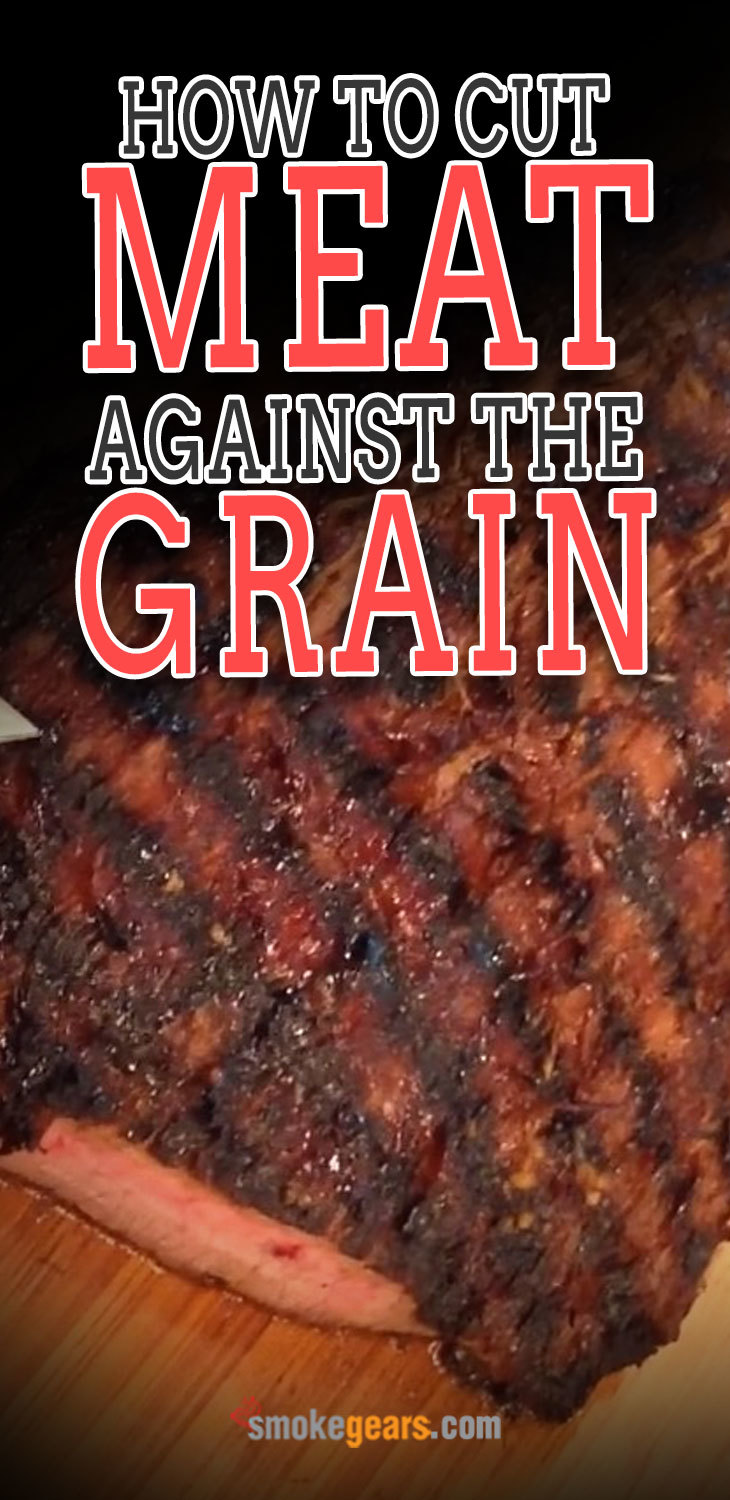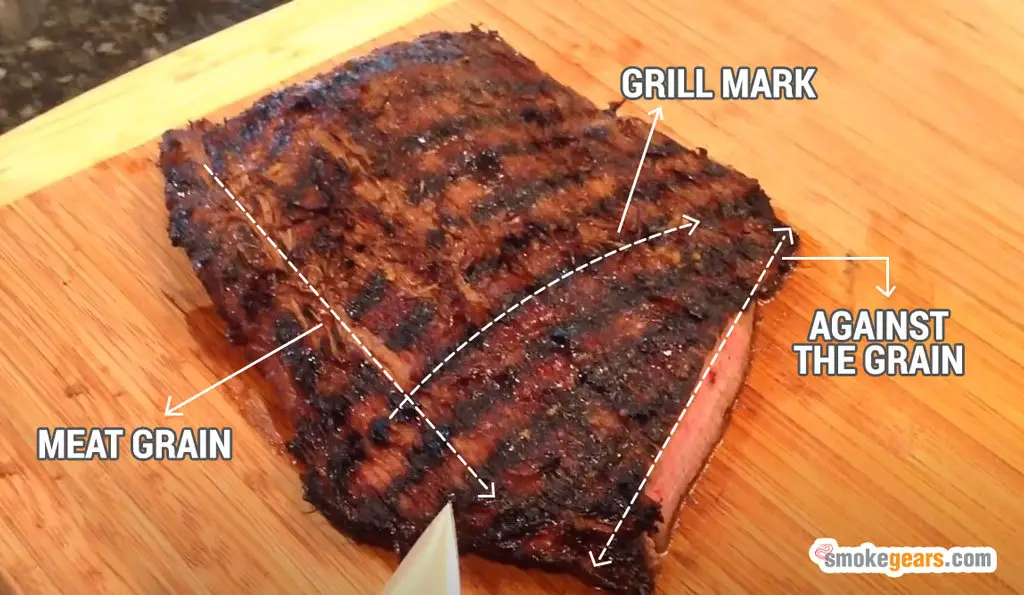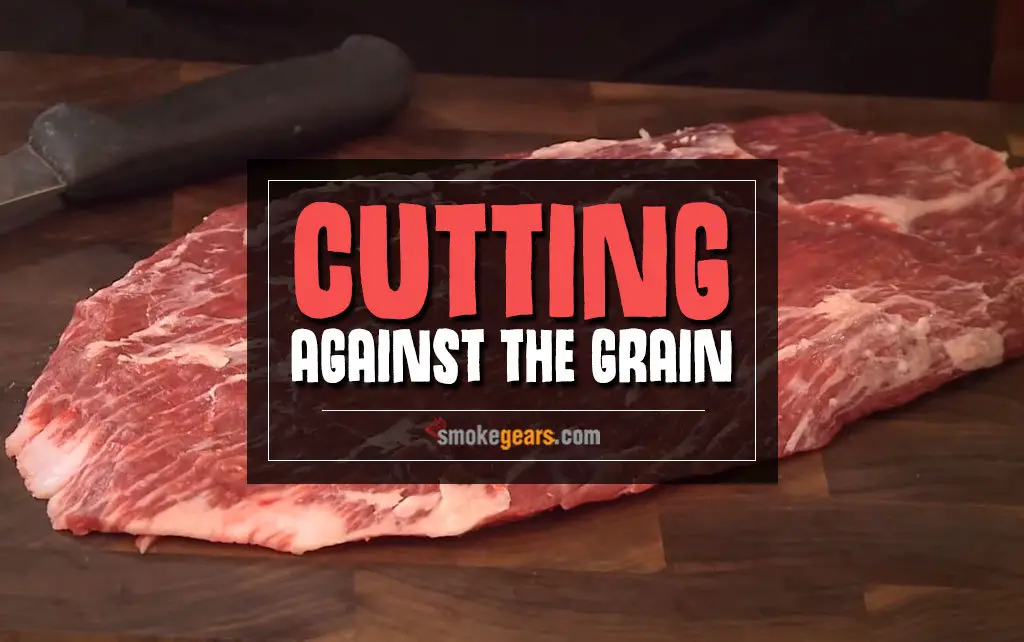What Does Cutting Against the Grain Really Mean? Why and How You Should Always Do
As we've covered plenty of times on this blog, everything about barbecue isn't as simple as it would seem at first. And this includes even cutting your meats. Because would you believe it that meat has a grain, just as much as wood has grain. Although, of course, the grains of meat are much different than the grains of wood.
In this article, as you'd expect, we'll be discussing the grains of meat and how by cutting with them, you can greatly improve your cuts of meat. And also brag to your friends on how you know the secret of the grains of meat.
More...
What is the Grain of Meat?
So first off, let us dispel the notion of the word "grain" here; it doesn't mean actual grain, like a grain of wheat. Instead, according to Hoadley, R. Bruce in his book "Understanding Wood: A Craftsman's Guide to Wood Technology" the term is a very confusing one that has a variety of meanings (265). It's much like the term "corned" beef, where corned is referring to the salt use and not actual corn.
So for grain, it refers more to the fibers that are present inside the meat; muscle fiber. Thicker cuts of meat like skirt flanks or flank will usually have thicker muscle fibers. Thinner cuts, such as loin and tenderloin, have thinner muscle fibers. These fibers, that is the grain, tend to visible and can run in a variety of patterns. You shouldn't confuse them with natural faults in the meat, which occurs when the fibers connecting the muscles break apart.
Why are the fibers there, you might wonder? Well, it's basic biology; when in motion, muscles will expand and contract and the fiber's job is to hold the muscle together so it won't rip apart when in use. This fiber, when cooked, results in meat being either tougher or easier to chew; the more fiber present, the tougher to chew the meat will be.
This is of course a rather brief explanation on the nature of the grain found in your cuts of meat. We could go into more detail, but that's not what we're here for. We're here to discuss the matter of cutting against the grain!
Why does it matter if I cut with or without against the grain?
So now that you know what the grain is, why does it matter if you cut against it or with it? Well, it has to do with keeping the meat tender. See, the fiber is what's holding the muscle together. If you cut with the grain, that keeps the muscle fibers intact. This makes the meat much less tender as the fibers are holding everything together. And tenderness means the meat can be easier, or harder if it's not tender, to chew.
Slicing meat against the grain, on the other hand, is cutting against the fibers, This makes them much shorter, and in turn, keeps the meat more tender. The less fiber present in a slice of meat, the more tender it'll be once eaten. So yes, it does indeed matter to cut against the grain if you want your cuts to be tender or not.
Should I cut with or against the grain?
When it comes to barbecue, you should know by now there really isn't a right or wrong way most of the time. And this is true with cutting your meat. You can cut with the grain, but be warned that the meat will not be as tender. Even if you have much more leaner and tender picks of meat, cutting with the grain will render them tougher due to more of the fibers remaining
Some people, of course, like their meat to be tougher and thicker and don't care much for tender cuts. So the choice is yours, but we still recommend cut meat against the grain. It takes a lot of bit-force to worth through a tough piece of the streak, so for the sake of your teeth and your jaw muscles, slicing meat against the grain is likely a good idea.
How to Cut Meat Against the Grain?
Cutting meat against the grain is easy, but there are a few steps you need to take.
Step 1: Cook the Meat
Cooking the meat will help you find the grains much easier. We'll go more into that in a bit. But know that for the best cuts, your meat should be cooked first and not raw.
Step 2: Let the Meat Rest
You might be tempted to start cutting right away, but don't! The meat needs to "rest" first. That is, it needs to be able to retain its juices, and to do that it mustn't be touched or cut for anywhere between five to twenty minutes; it varies depending on the type of meat.
Step 3: Place Meat on a Cutting Board and Use a Sharp Knife
After the meat has had time to rest, remove it from its tray, pan, or wherever it was sitting and place it on a cutting board. You'll need a sharp knife for this, and we've got plenty of articles on how to keep your knives sharp or the best knives for cutting. If you know the basics of keeping your knife sharp, then keep reading!

Step 4: Find the Grain
Now you need to find the grain. You'll have to look closely at your meat, as even when cooked the grain can be hard to spot. Look for the thin, often white, fibers that run throughout the meat. That is the grain.
Step 5: Cut the Meat Against the Grain
So you have your knife ready, found the grain, and it's time to cut! But hold on, there is a method to this madness so don't start chopping just yet. Cutting meat against the grain means you'll be cutting over the grain and not beside it or into it. That type of cut is called "with the grain", and results in a tougher slice of meat. If you like tougher steaks, there's your answer!
You want to make unbroken sawing motions while you cut, and as you do so try to keep the slices thin. If the slices are too thick, there will be more fiber per slice resulting in it being tougher than a thinner slice.
And that's all there is to cut meat against the grain! Now that you know this, feel free to try thinner or thicker cuts to see if you can find the perfect mix of tenderness, juiciness, and thickness for your steaks, briskets, and other cuts! As we have said, cutting meat against the grain isn't strictly necessary, but most people prefer their meat to be tender and easier to chew.

Now, all said and done, while slicing meat against the grain is easy it may take some time to perfect this art. We recommend that when starting out, use cheaper meats like chuck steak as opposed to sirloin; you don't want to ruin an expensive cut of meat, after all! A great way to practice your cutting skills is by grilling fajitas.
Fajitas require strips of meat, of course, and this gives you a perfect opportunity to work on slice meat against the grain. Along with a faster turn-around time to know if the strips your serving are nice, tender, and juicy or rock hard. From there, start honing your skills on larger and eventually more expensive cuts of meat. Such as sirloin, T-bone steaks, briskets, etc.
It doesn't take much practice, but once you've mastered the art of cutting meat against the grain you can wow your friends and family with culinary skills while you serve them some of the best, most tender steaks they'll ever have, and you don't have to tell them it's chunk steak either!
Frequently Asked Questions (FAQ)
What Does It Mean To Cut Across The Grain Of Meat?
Cutting across the grain of the meat is the same as against the grain. When you're cutting against the grain, you're essentially cutting across it as you're attempting to break the muscle fibers. So when you hear people talking about "cutting across" the grain it's the same as "against" the grain, just more literal.
It's important to remember to not cut on the grain, as this means the slice will still be tougher to chew than one that was cut across and or against.
How Do You Know Which Way The Grain Runs In Meat?
The grain will normally run in a downward parallel fashion. This means that once you can find one grain, you can make a pretty educated guess where the other grains will be even if you can't see them. This is very helpful in tender cuts, where the grain can be quite hard to spot. Find the most visible grain, and start there!
How Do You Cut Against The Grain?
By literally cutting across it. As we discussed, the grain is the result of fibers holding the muscle together; cutting across, that is to say against, them will weaken the overall structure of the muscle and make it more tender when biting and chewing. Cutting against and across doesn't mean cutting along the grain; this will result in the slice of meat still being tough to chew.
How Do You Cut Chicken Across The Grain?
Chicken is another story when compared to beef. While the grain is still there, it's largely non-uniformed. Meaning that while running in the same direction, the size of the grain, along with width and length will widely vary. So to accurately cut against the grain forever slice is possible, but you'll end up with cuts that are too tender to cook or eat.
The best bet is to start in the center of the piece of chicken and identify some of the largest grains. Cut against those, and follow that pattern all the way down. You will have some differences in slices, but overall the chicken will still be tender throughout as opposed to different levels of tenderness you would get from trying too hard to match against the grain with every cut.
Why Do you Cut Against The Grain?
You want your slices to be tender, right? The grain is fibers where the muscle would contract. They hold the muscle, that is to say, the meat, together. By cutting against them, you're keeping the sliced tender. This is to say much easier to chew as there isn't much fiber holding the piece of meat together.
Cutting with the grain, that is to say along the fibers or next-to the fibers, results in the piece of meat being difficult to chew. The fibers are still holding everything in place making it harder for some to eat these tougher pieces of meat.
Do You Cut Chicken Against The Grain?
Yes. While the chicken grain varies, see above, it's still recommended you cut against the grain of chicken to ensure the slices are nice and tender as opposed to tougher to chew and eat.
Which Way Is The Grain Of Chicken?
It's going to be pointing downward, much like all meats really. Muscles contract, and so the fiber matches this contraction which when viewed by us is in a parallel downward pattern. So chicken is much the same, really, but the fiber is longer in width at some points than others.
Why Does The Meat Need To Rest?
You saw above how we recommend letting the meat "rest" after taking it out of the oven or off the grill. Why is this, you might wonder? Well, as the meat is cooked it'll draw moisture and juices to the center; resulting in a visible shrinkage of the piece of meat as a result. When the cooking is finished, the moisture will begin to expand back into the rest of the meat.
So by giving it a rest, you'll be giving the meat a chance to move the moisture and juices back to their original places. If you cut into it right away, the moisture will pool out and the meat will become much tougher; possibly even inedible if too much of the juice spills out.


